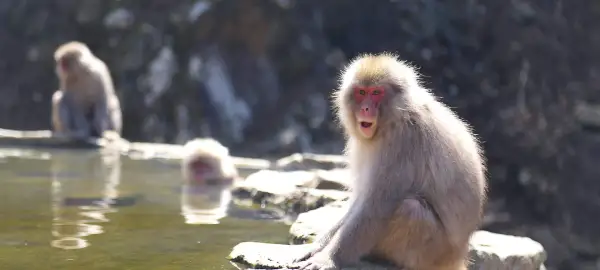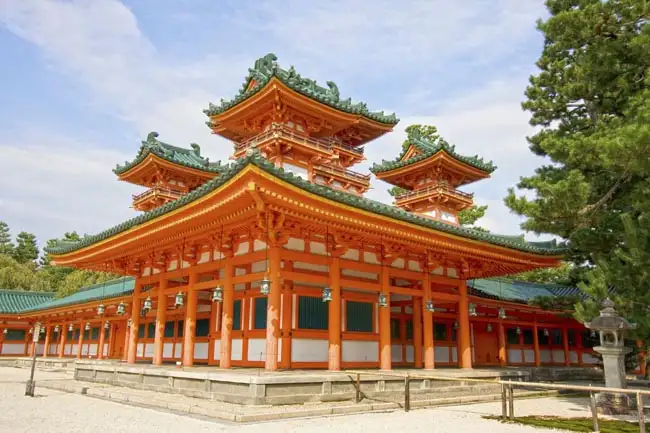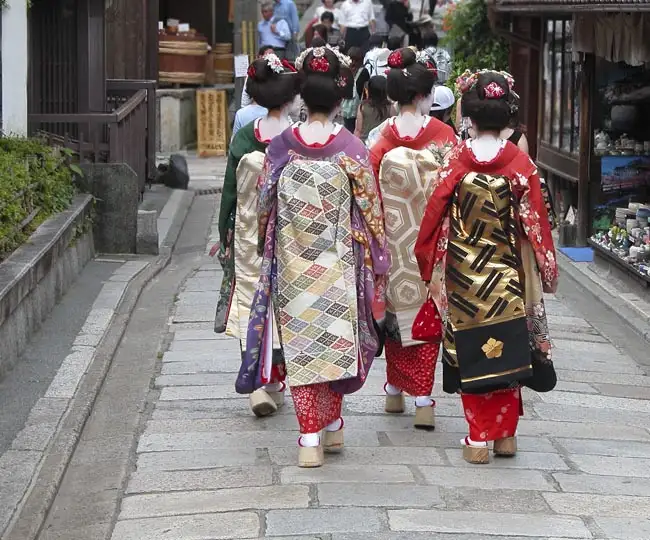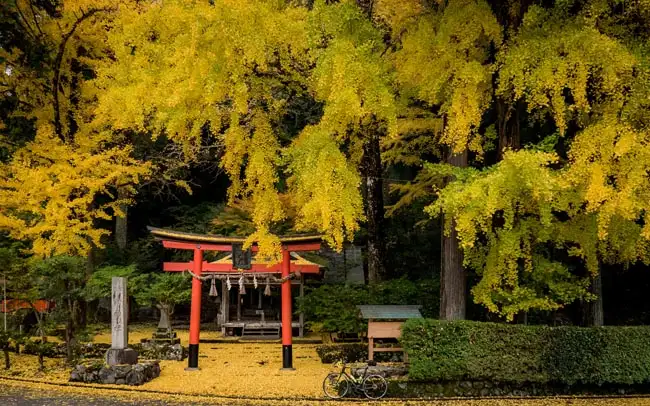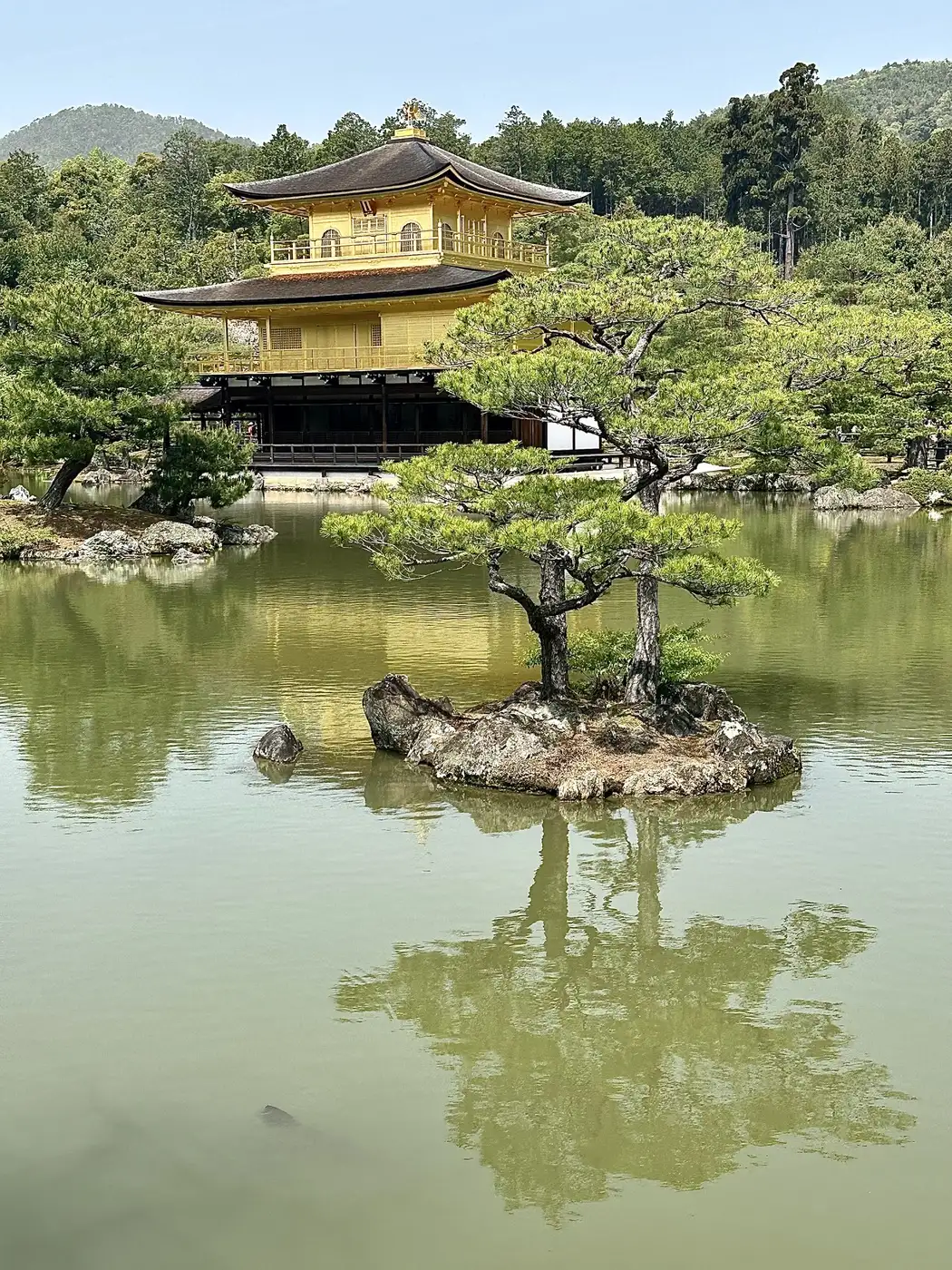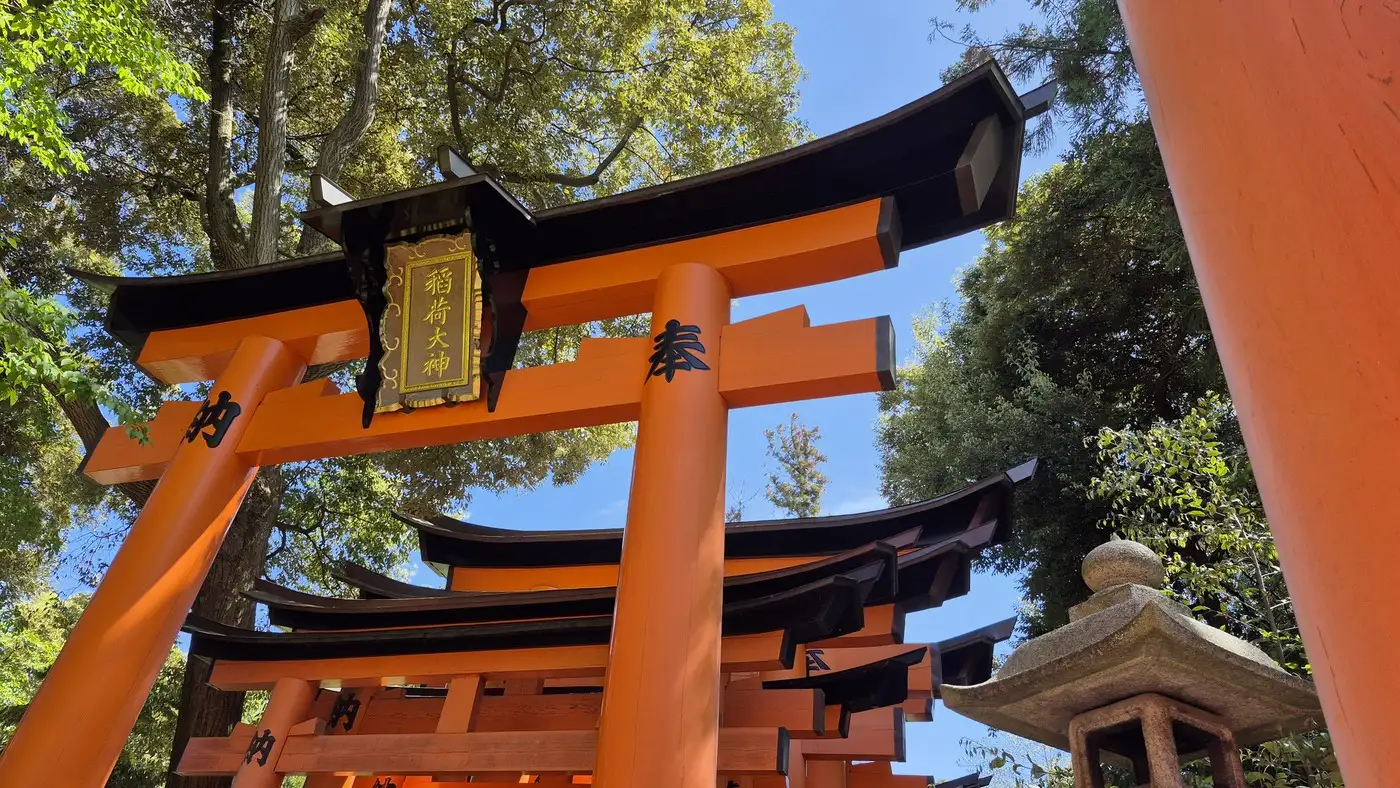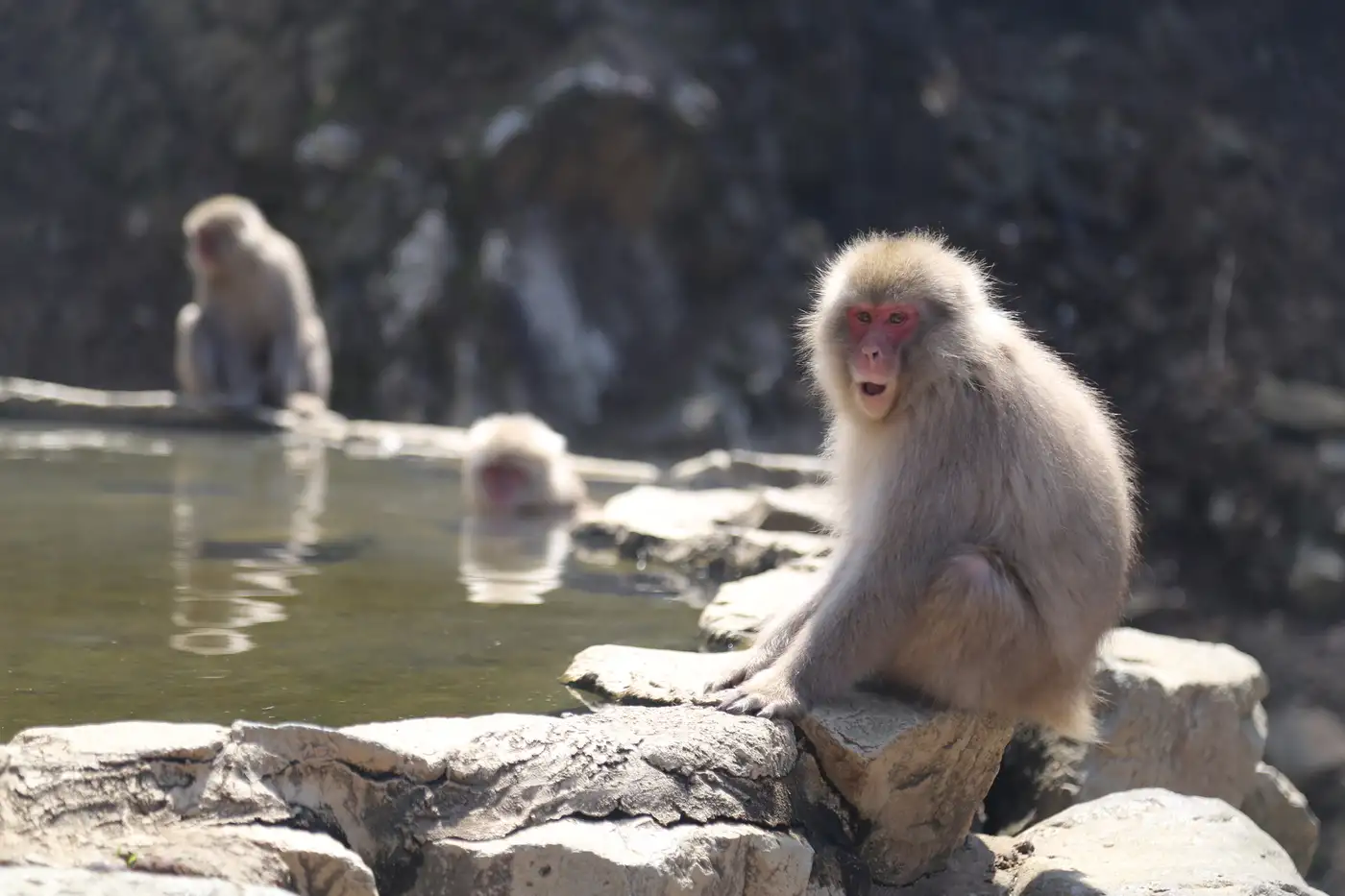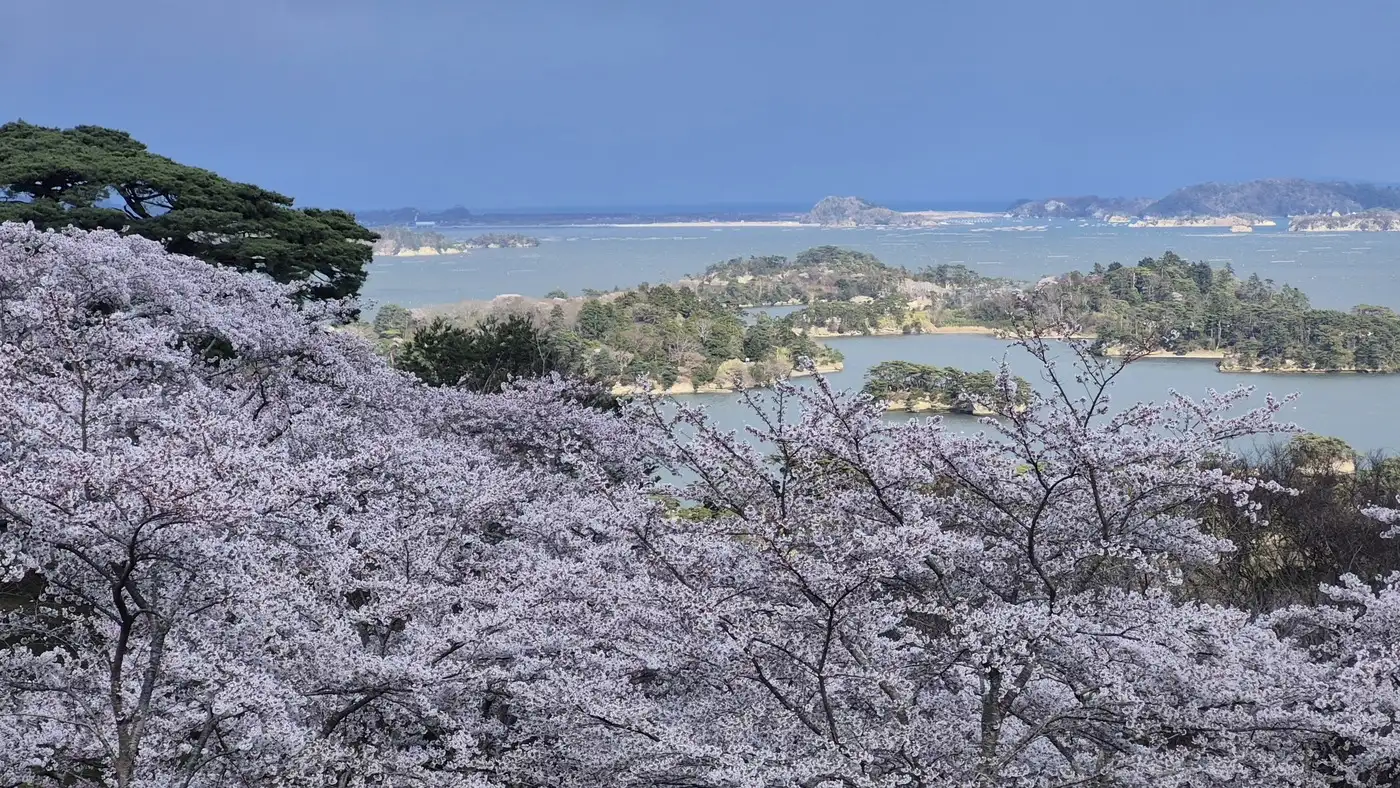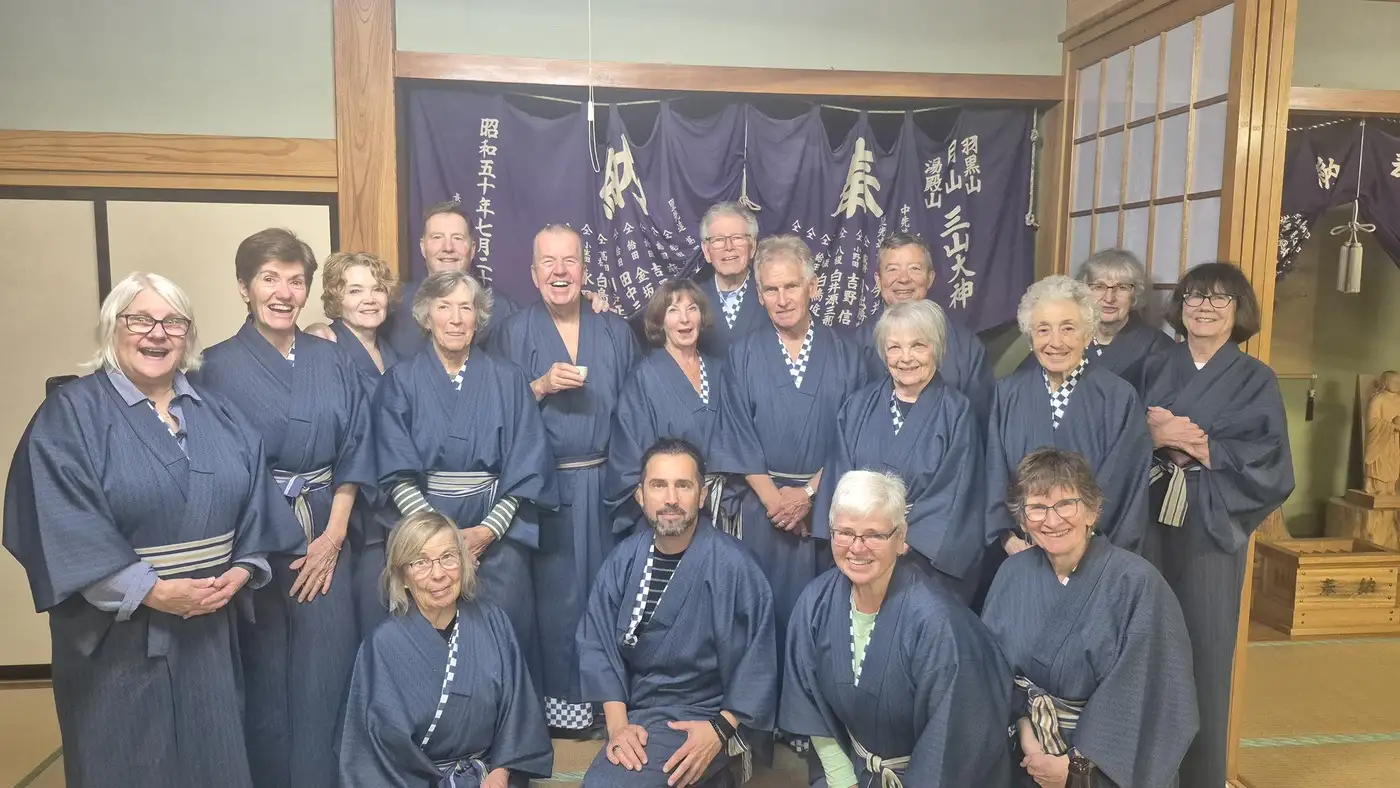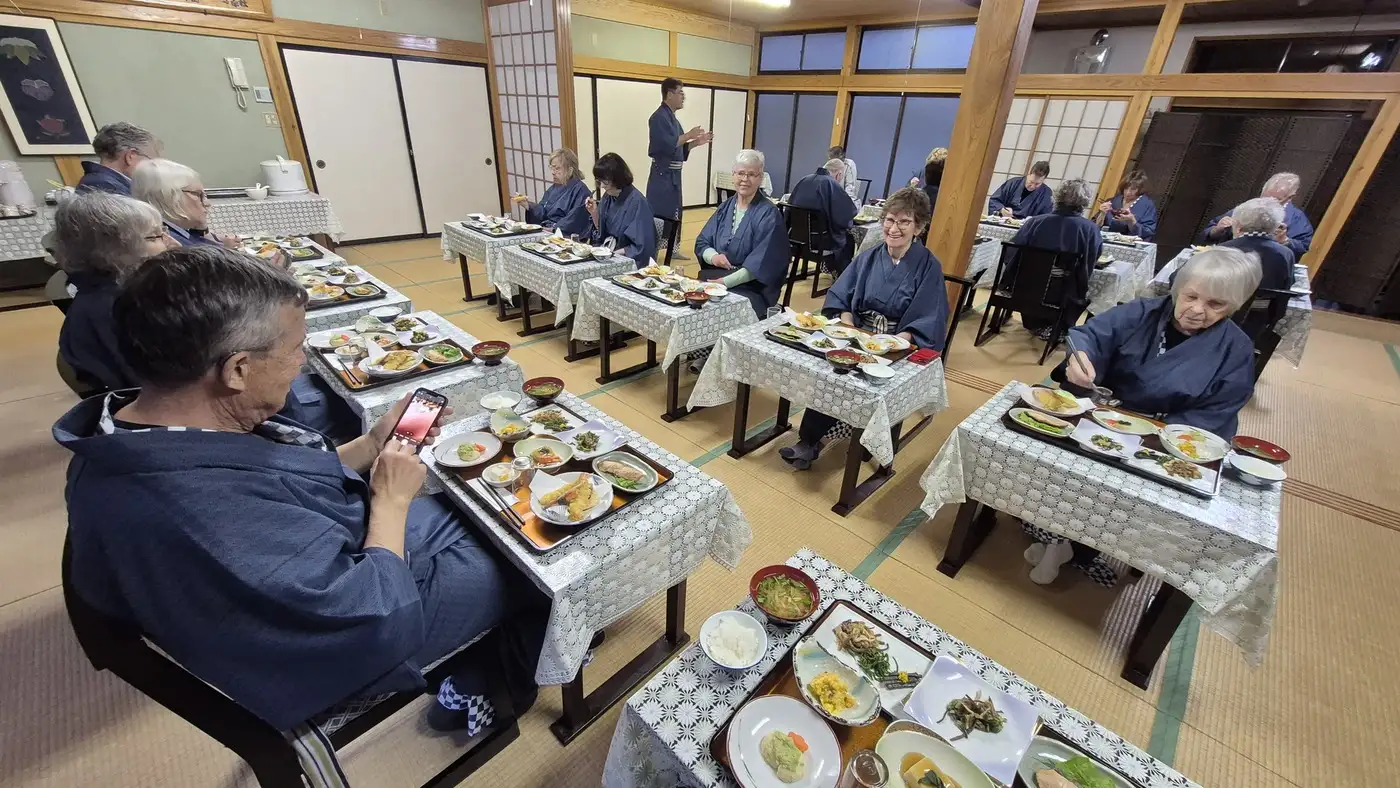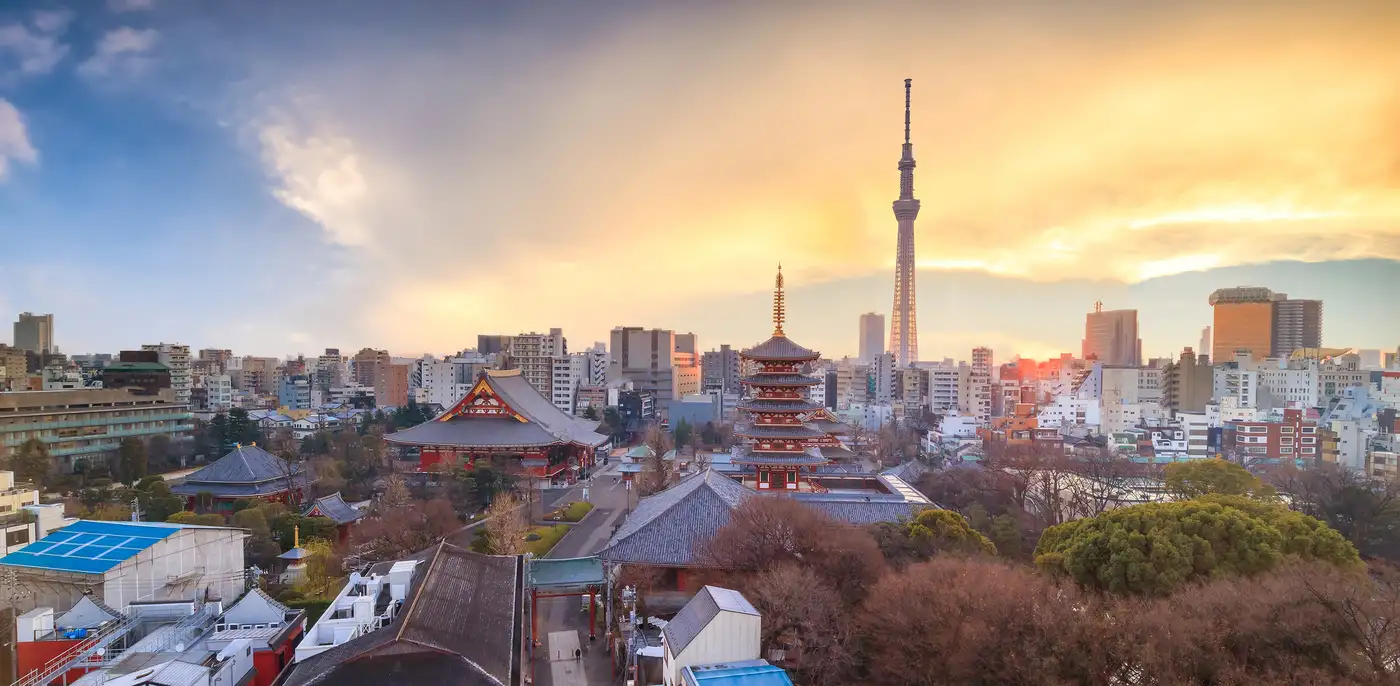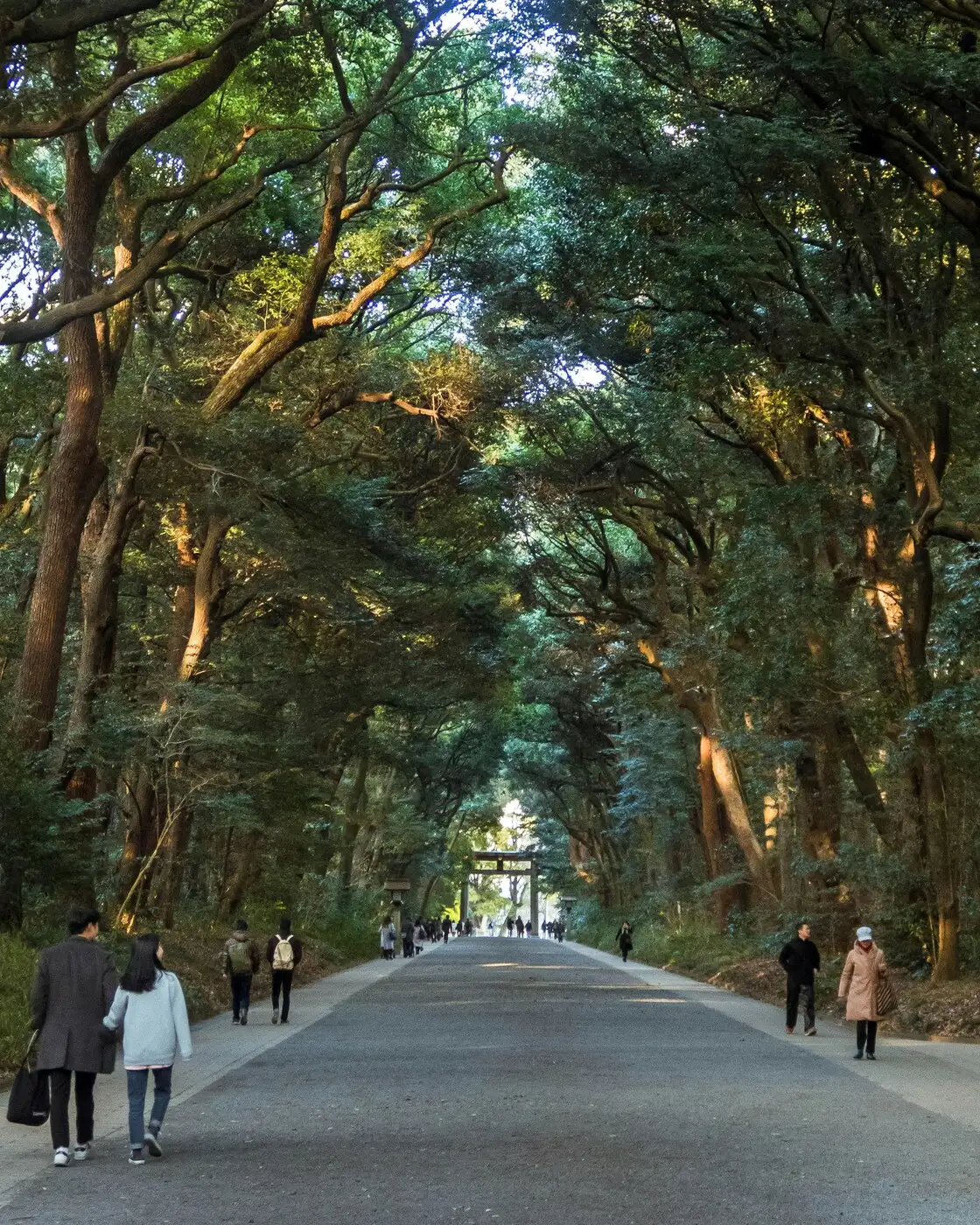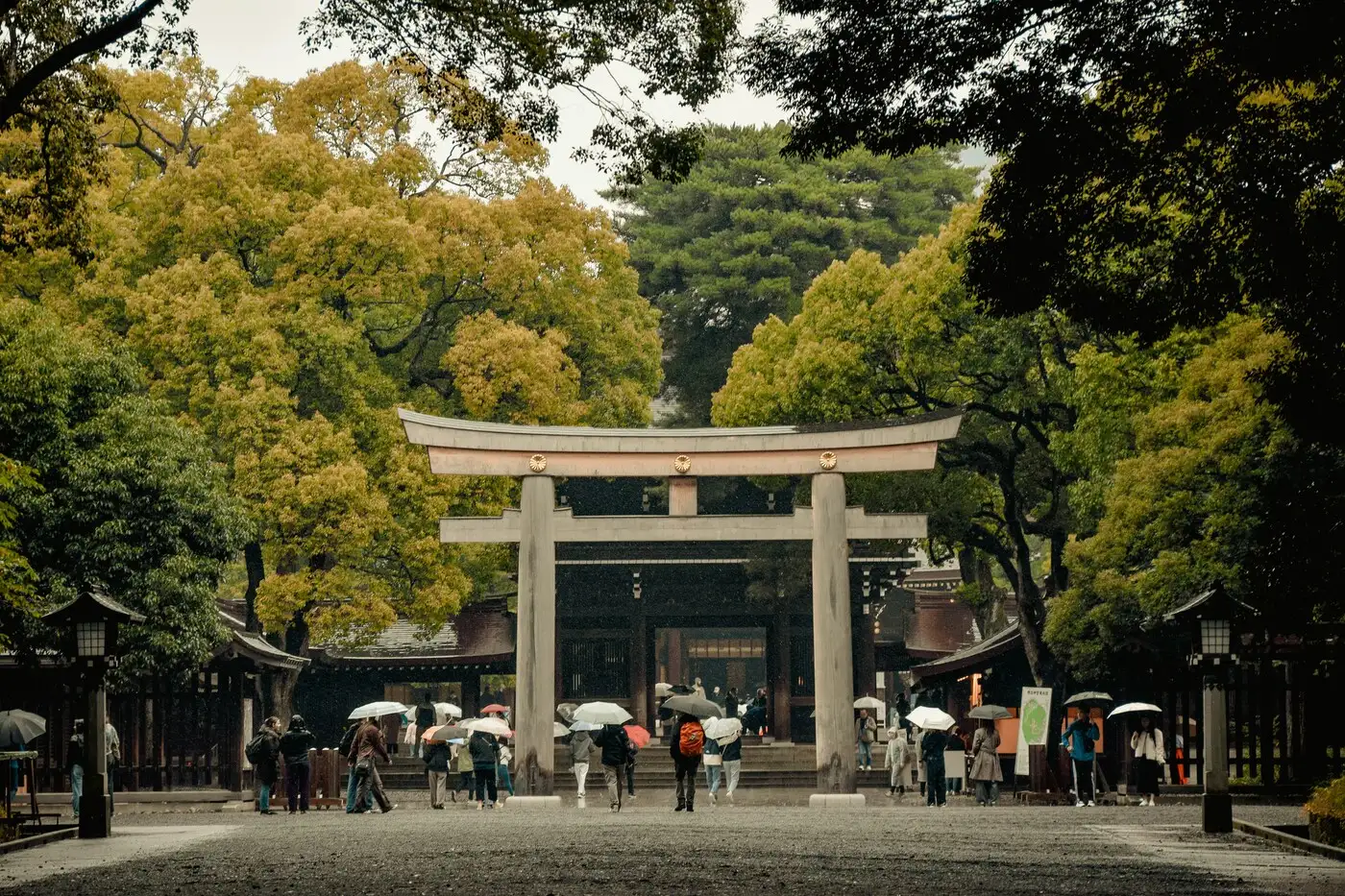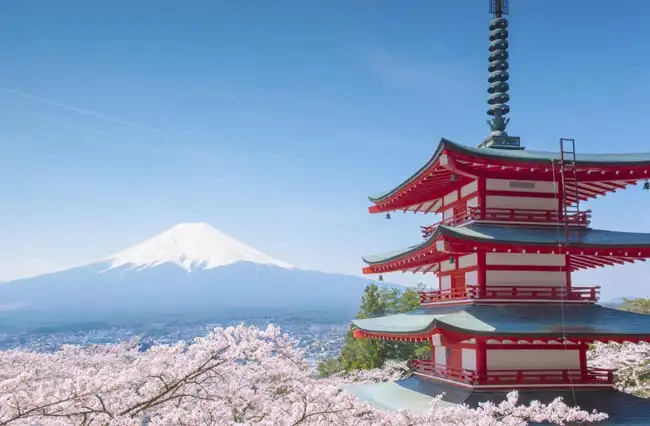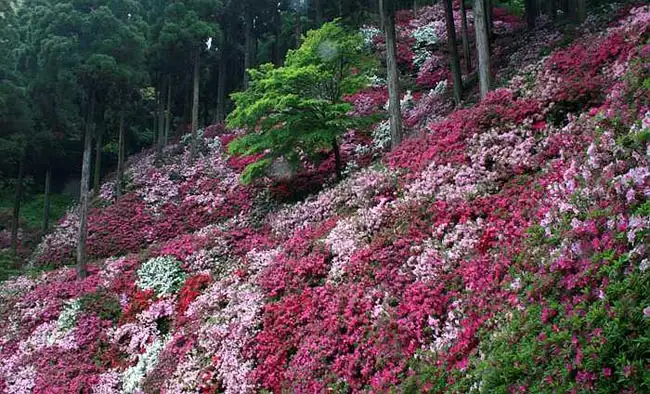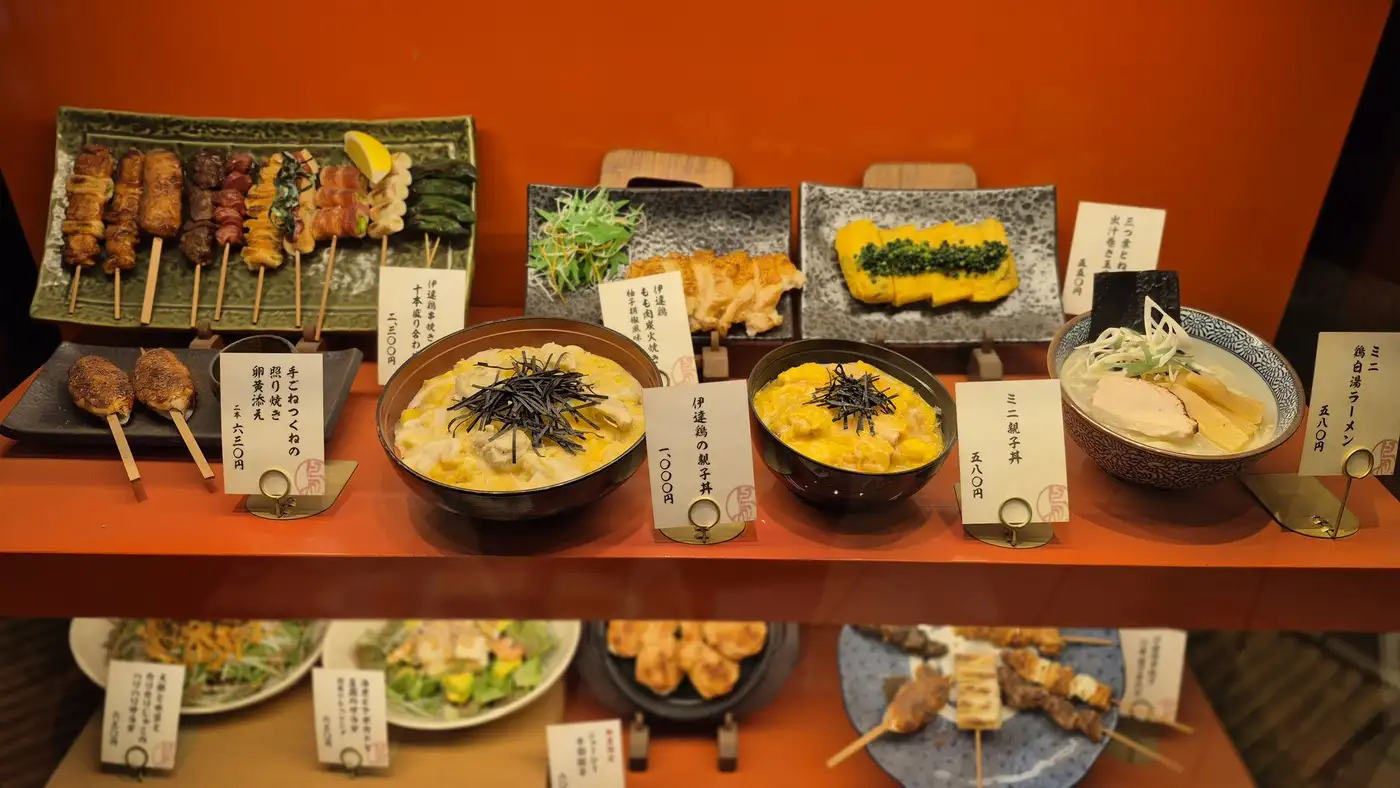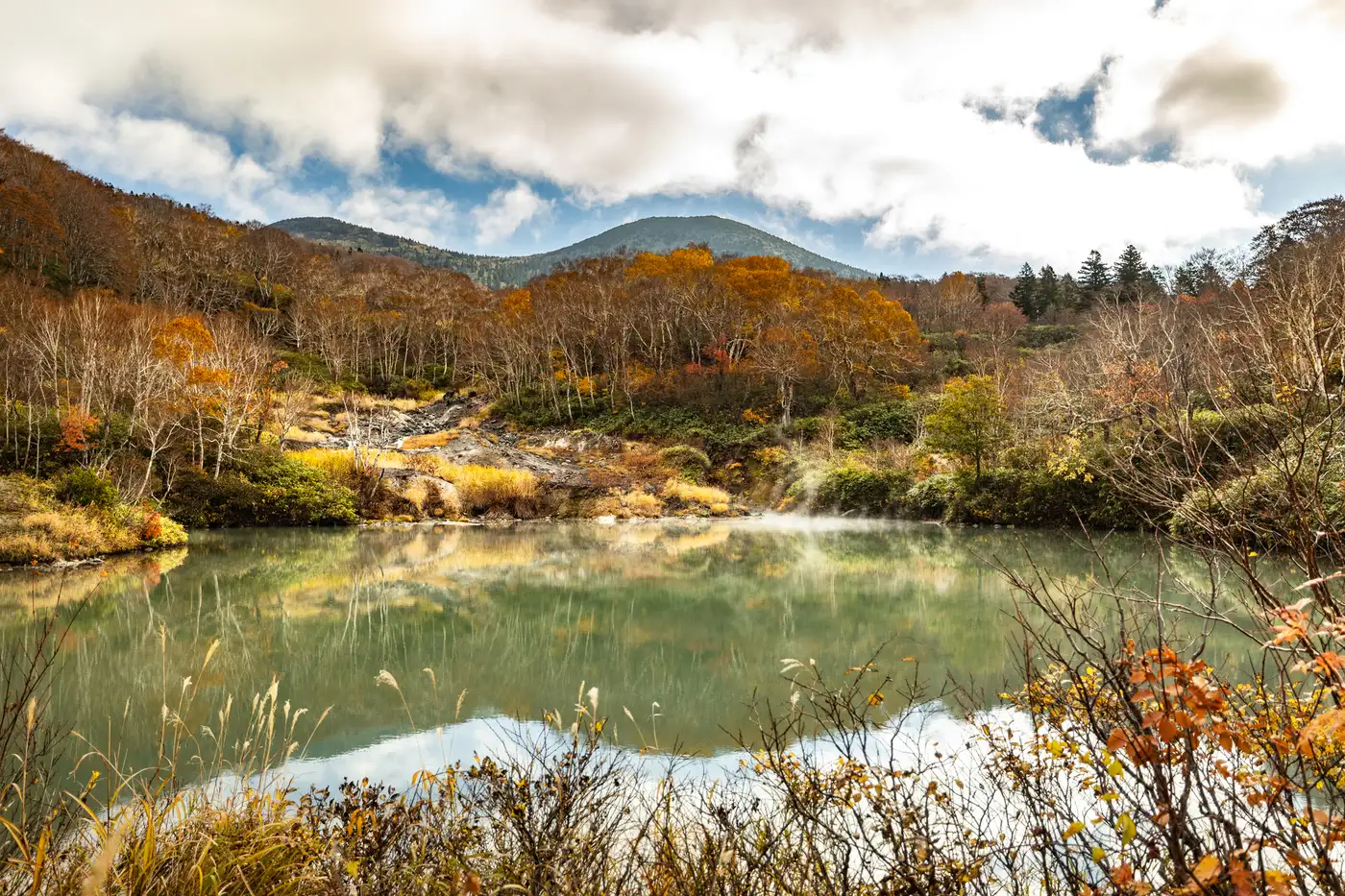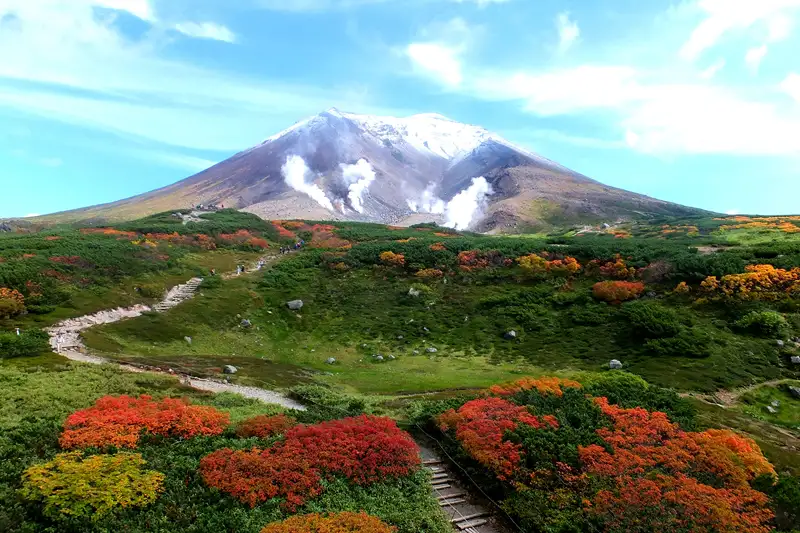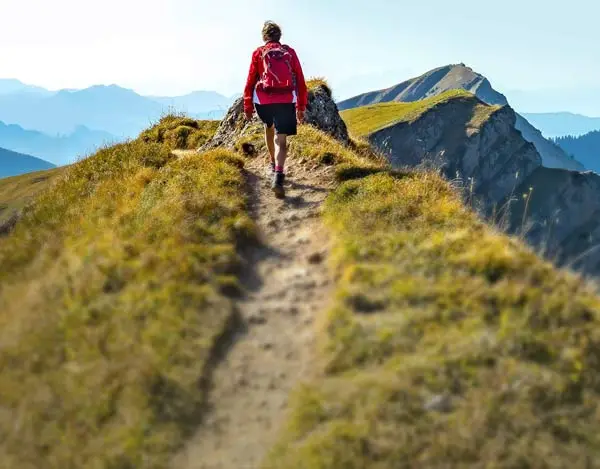Today we travel to Yamagata on Japan's exciting and super-efficient Shinkansen "bullet train" (about 2.5 hours).* Yamagata is a large prefecture along the Sea of Japan coast in the southern Tohoku Region. The area is known for its agricultural products (especially cherries - in season), hot springs, rural flair, and natural beauty. On arrival we travel by private coach to Mt Haguro.
The first few days of our trip are weighted toward matters spiritual, with temple and shrine visits and an immersion in Japan's venerable culture and traditions. With this in mind, we'll visit Sanjin Gosai-den, the largest wooden building with a thatched roof in Japan. The present structure is from 1818 but its history reaches much further back in time. Looking at the impressive over two meter thick thatched roof, you don’t want to image the amount of labour that goes into repairing it.
We continue to the vicinity of Mt. Haguro. People have been drawn to this spot because of its solemn atmosphere and the 1,400 year history since the founding of the shrine. Mount Haguro is considered sacred by followers of Japan's Shinto religion and of Shugendo, an ancient Japanese tradition of mountain worship whose practitioners are commonly known as Yamabushi ("those who lie in the mountains"). Taking their faith very seriously, they come every year on a pilgrimage to worship their deities.
On top of Mount Haguro there are a number of temples and shrines, although this is said to be a shrine complex. It just shows that Buddhism and Shinto were entwined before the two religions were forcefully separated in Japan's Meiji Restoration, the events restored imperial rule to Japan in 1868 and that heralded the begin of a new era in Japan.
There is a trail leading to the top of the mountain; however, it is common for visitors to be limited to walking only one way (down) in order to relieve congestion, which means that we will likely travel to the top by road and then offer the option to either walk or ride back down. Your Tour Leader will provide details prior to arrival so you can consider your options; however, we can advise that the trail is well-surfaced with 2,446 shallow steps and should take just over an hour to descend.
We will see the centuries-old wooden pagoda and a nearby cedar tree that is said to be 1,400 years old -- there were once two of them and they were thought of as a "couple" but one was sadly destroyed by lighting). The remaining ancient cedar stands proud amongst its younger cousins that are "only" a few hundred years old. Walking in a forest of huge ancient cedars definitely makes one feel humble and small.
Apropos of the nature of our surroundings, our night's 'Shukubo' temple accommodation reflects the solemnity of this special place. Originally the lodgings for the Buddhist monks, the story goes that Shukubo became available for ordinary pilgrims around 1,200 years ago during the Heian Period. From that time, there seemed to be Shukubo that was managed by persons other than Buddhist monks. About 400 years ago, when it became the Edo period, Shukubo became even more popular. Guests are encouraged to take part in temple activities and to learn about traditional temple life. Accommodations are spartan, but comfortable and atmospheric -- truly an unforgetable and quitessentially Japanese experience.
* This morning our large luggage will be sent ahead to Nagano for us (included). We will have the bus for the day after we arrive in Yamagata, so your day bags can be left on board during our day's activities prior to arriving at our hotel later today.
Overnight at Mt Haguro.
Included Meal(s): Breakfast and Dinner